The secure closure of vials is paramount across numerous industries, most notably pharmaceuticals, biotechnology, diagnostics, and even fine fragrances. An improperly sealed vial can compromise product efficacy, introduce contaminants, lead to spoilage, and pose significant safety risks to both users and consumers. Therefore, understanding the various methods of vial sealing and the sophisticated machinery designed to execute these processes is essential for anyone involved in the manufacturing, packaging, or regulatory aspects of these sensitive products.
This comprehensive exploration will delve into the science behind vial sealing, dissecting the common methods employed and highlighting the pivotal function of vial capping machines in achieving reliable, consistent, and sterile closures. We will examine the different types of vial closures, the challenges associated with sealing, and the various technological solutions offered by modern capping equipment.

The Anatomy of a Secure Seal: Understanding Vial Closures
Before we delve into the “how,” it’s crucial to understand the “what.” Vials, typically small glass or plastic containers, are designed to be sealed with specific closure systems. These closures are not merely stoppers; they are engineered components that, when properly applied, create a barrier against external influences while maintaining the internal environment of the vial. The most common types of vial closures include:
● Rubber Stoppers (Bungs): These are typically made from pharmaceutical-grade rubber formulations, designed to provide a tight seal against the vial neck. Rubber stoppers offer excellent flexibility and resilience, allowing for easy piercing (for drawing or injecting) while maintaining a self-sealing property after withdrawal. They are available in various shapes and sizes to accommodate different vial neck configurations.
● Aluminum Crimp Caps: These caps are typically made of aluminum and feature a central opening, often covered by a tear-off disc. The crimp cap is placed over the rubber stopper and the vial neck, and then mechanically crimped around the neck, creating a secure and tamper-evident seal. The crimping process creates a tight, metal-to-glass/plastic seal that compresses the rubber stopper, further enhancing the barrier.
● Plastic Screw Caps: Similar to caps used on bottles, these caps feature internal threads that engage with corresponding threads on the vial neck. When tightened, the cap compresses a liner (often made of rubber or plastic) against the rim of the vial, creating a seal. Screw caps offer convenience for repeated access but are less common in applications requiring absolute sterility or tamper evidence compared to crimp caps.
● Flip-Off Seals: These are a combination of a rubber stopper and an aluminum crimp cap with a plastic “flip-off” tab. The flip-off tab covers the central portion of the crimp cap and can be easily removed by hand, revealing the underlying stopper for access. This provides a convenient and tamper-evident closure, widely used for injectable medications.
The choice of closure system depends on several factors, including the nature of the product within the vial (liquid, powder, lyophilized cake), the required level of sterility, the desired method of access (injection, pouring, etc.), and regulatory requirements.
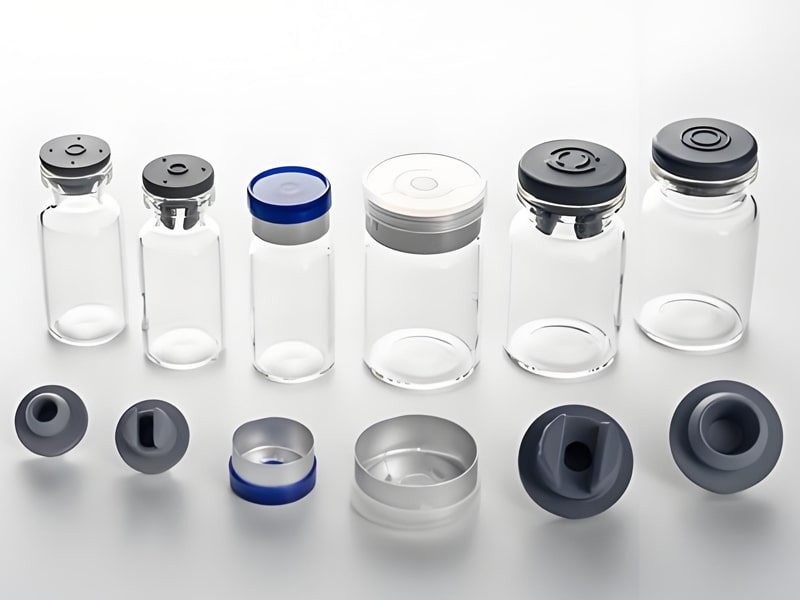
The Science of Sealing: Achieving a Hermetic Barrier
The goal of vial sealing is to create a hermetic barrier – a seal that prevents the passage of air, liquids, or microorganisms into or out of the vial. This is achieved through a combination of material properties and mechanical force.
● Compression: In the case of rubber stoppers and screw caps with liners, the sealing action relies on compressing the resilient material against the rigid surfaces of the vial neck and the cap. This compression creates intimate contact, blocking potential pathways for ingress or egress. The elasticity and recovery properties of the sealing material are crucial for maintaining the seal over time and through temperature variations.
● Mechanical Deformation: For aluminum crimp caps, the sealing is achieved through the mechanical deformation of the aluminum skirt around the vial neck. This process essentially molds the metal to the contours of the vial, creating a tight fit that secures the stopper and forms a robust barrier. The crimping process must apply sufficient force to achieve a secure seal without damaging the vial or the stopper.
● Material Interaction: The compatibility between the vial material (glass or plastic), the stopper material, and the product within the vial is also a critical factor. Certain materials can react with each other, compromising the seal or the product itself. Pharmaceutical-grade materials are carefully selected to ensure inertness and compatibility.
Achieving a consistently reliable seal requires precise control over the sealing process. Factors such as the amount of compression, the force of crimping, the angle of the crimping jaws, and the speed of operation all influence the final seal quality. This is where the role of specialized machinery becomes indispensable.
Enter the Vial Capping Machine: The Engine of Secure Closure
Manually capping vials is a labor-intensive, inconsistent, and often impractical process, especially for high-volume production. Moreover, achieving the precise and reproducible force required for a secure seal is extremely difficult by hand. This is why vial capping machines are essential components of modern packaging lines.
A vial capping machine is a specialized piece of equipment designed to automate the process of applying and securing vial closures. These machines are engineered to handle vials of various sizes and shapes and to apply different types of closures with precision and speed. Their primary function is to consistently and reliably create a secure seal, ensuring product integrity and compliance with strict quality standards.
The operation of a vial capping machine typically involves several key stages:
1. Vial Feeding: Vials are transported to the capping station, often from an upstream filling machine or an automated unscrambler. This can be done via conveyor belts, star wheels, or indexing systems.
2. Closure Presentation: The appropriate closures (stoppers, caps) are fed from a bulk supply, typically via vibratory bowls or centrifugal feeders, and oriented for placement onto the vial.
3. Closure Placement: The machine precisely places the stopper onto the vial neck and then the cap over the stopper and neck. This step requires accurate positioning to ensure the closure is properly seated before the sealing action.
4. Sealing (Capping): This is the core function of the machine. Depending on the type of closure, this involves:
● Crimping: For aluminum crimp caps, a set of crimping jaws or rollers apply controlled force to deform the cap skirt around the vial neck.
● Torquing: For plastic screw caps, a capping head with controlled torque applies the cap to the vial neck, ensuring proper tightness.
● Pressing: For some types of stoppers, the machine may apply direct downward force to seat the stopper firmly.
5. Vial Discharge: The sealed vial is then discharged from the capping station, typically onto a conveyor for subsequent processing or packaging.
Types of Vial Capping Machines: Tailoring Solutions to Needs
Vial capping machines come in various configurations, each designed to meet specific production requirements and levels of automation. Some common types include:
● Manual Vial Capping Machines: These are the simplest and least automated type, often used for low-volume production, laboratory settings, or research and development. The operator manually places the vial and closure into the machine, and then activates the capping mechanism (often by pulling a lever). While inexpensive, they are slow and rely heavily on operator skill for consistent results.
● Semi-Automatic Vial Capping Machines: These machines offer a higher level of automation than manual cappers. The operator typically places the vial and closure onto a fixture, and the machine then performs the capping operation automatically. This significantly increases speed and consistency compared to manual methods.
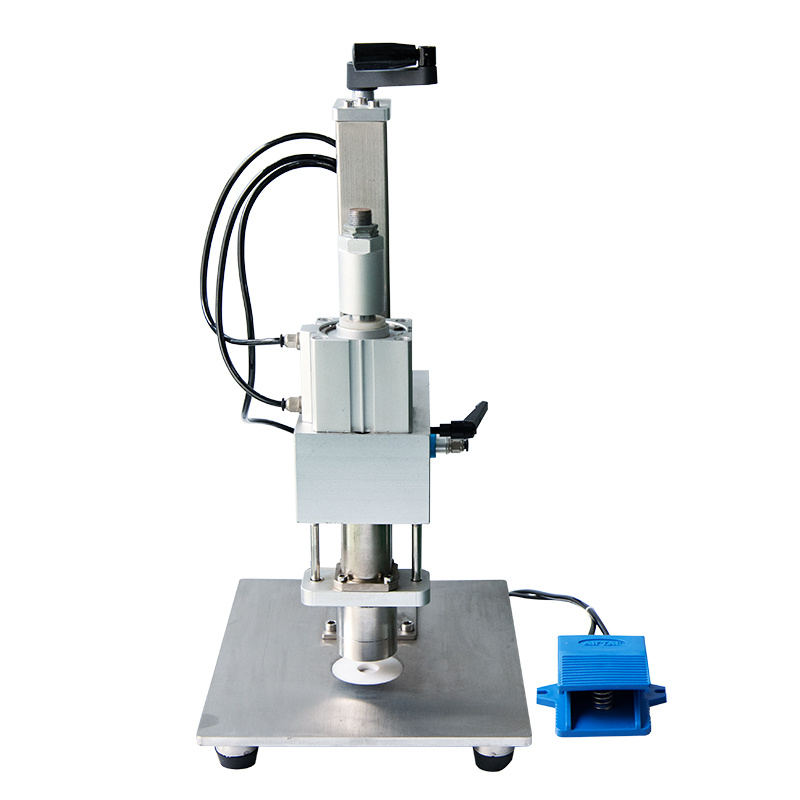 |
XBZG-50 Semi-automatic Vial Capping Machine
It is specially used for capping vials, suitable for small batch production in the pharmaceutical and cosmetic industries |
The XBZG-50 Semi-Automatic Vial Capping Machine is a prime example of this type, ideal for smaller-scale production or specialized runs.
● Automatic Vial Capping Machines: These machines are designed for high-volume production lines. They integrate seamlessly with upstream and downstream equipment (like filling machines) and automate the entire process from vial feeding to sealed vial discharge. These machines utilize complex control systems, sensors, and robotics to achieve high throughput and exceptional consistency.
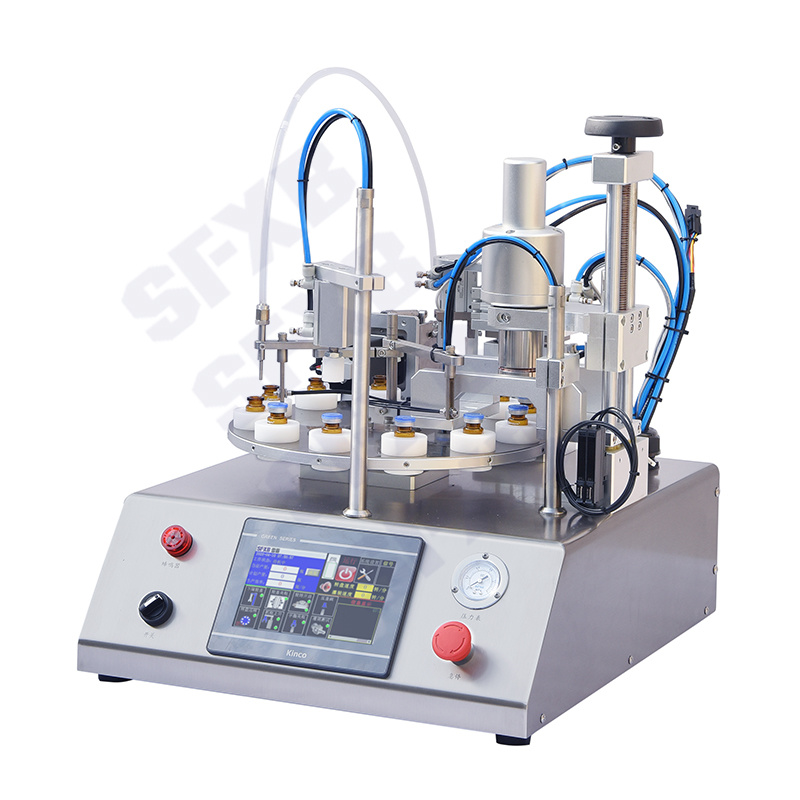 |
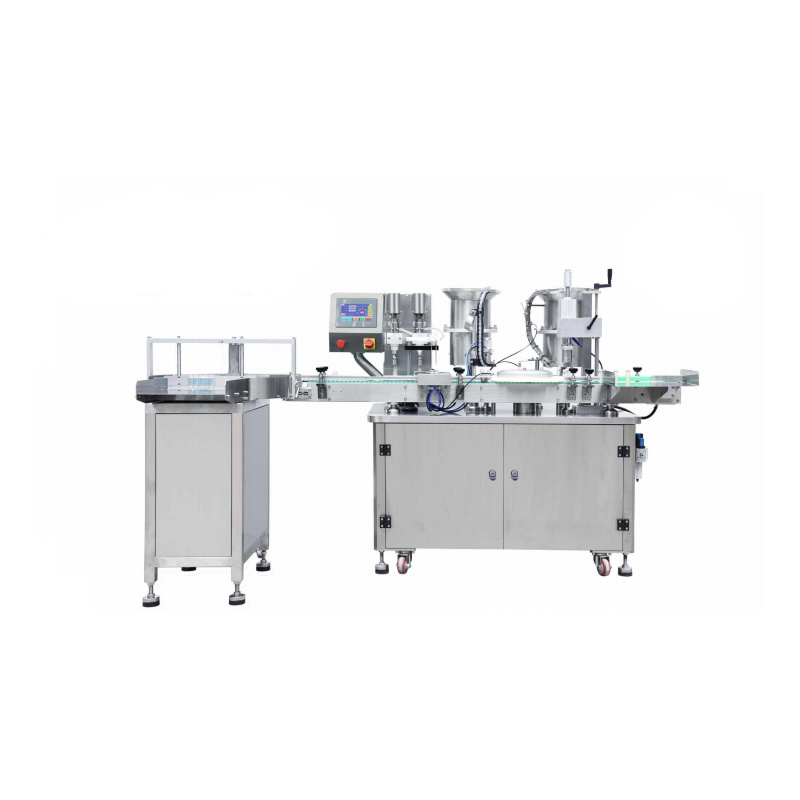 |
| Desktop ceramic pump vial filling and capping machine | Dual-servo high-precision ceramic pump vial filling and capping machine |
● Integrated Filling and Capping Machines (Monoblock Systems): These are highly efficient systems that combine both the filling and capping processes into a single machine. This design reduces the footprint of the equipment, minimizes handling between processes, and enhances overall line efficiency.
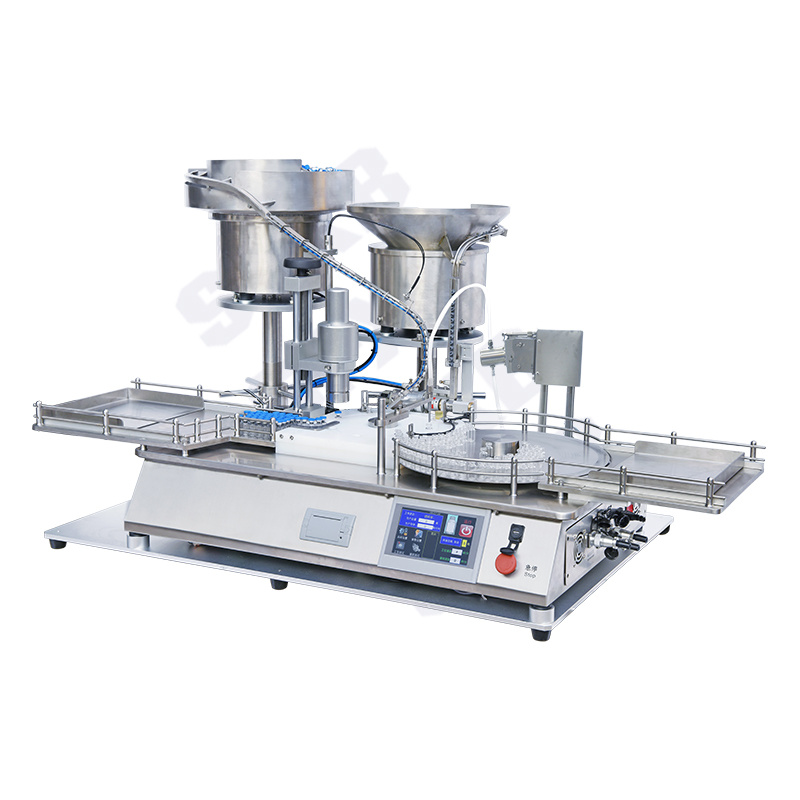 |
Desktop vial filling production line
bottle feeding/stoppering/capping Special small filling production line for vials |
The Desktop Vial Filling Production Line demonstrates this type of integrated system, offering a compact solution for filling and capping vials.
Key Features and Considerations in Vial Capping Machines:
Selecting the right vial capping machine involves considering a multitude of factors beyond just the level of automation. Key features and considerations include:
● Vial Size and Type Compatibility: The machine must be capable of handling the range of vial sizes and shapes used in production. Changeover mechanisms for different vial formats should be efficient and easy to execute.
● Closure Type Compatibility: The machine must be designed to apply the specific type of closures used (crimp caps, screw caps, etc.). Some machines are versatile and can handle multiple closure types with appropriate change parts.
● Production Speed (Throughput): This is a critical factor for high-volume applications. The machine’s speed should match the overall production line speed to avoid bottlenecks.
● Accuracy and Consistency: The machine must consistently apply the closures with the correct force and alignment to ensure a reliable seal on every vial. Precision engineering and robust control systems are essential for achieving high accuracy.
● Sterility Requirements: For pharmaceutical and biotechnology applications, the machine must be designed to operate in a sterile environment (e.g., cleanrooms). This involves using appropriate materials, minimizing potential contamination points, and facilitating effective cleaning and sterilization procedures (e.g., CIP/SIP – Clean-in-Place/Sterilize-in-Place capabilities).
● Changeover Flexibility: The ease and speed of changing over the machine to accommodate different vial sizes, closure types, or product runs are important for manufacturing flexibility.
● Quality Control Integration: Modern vial capping machines often integrate with vision systems or other inspection equipment to verify proper closure application and detect defects.
● User Interface and Control System: An intuitive and user-friendly interface, often with a touchscreen, allows operators to easily set parameters, monitor performance, and troubleshoot issues.
● Safety Features: Robust safety features, such as interlocks, emergency stops, and guarding, are essential to protect operators.
● Maintenance and Reliability: The machine should be designed for ease of maintenance and offer high reliability to minimize downtime and ensure consistent production.
The Importance of Validation and Quality Control
In industries where product safety and efficacy are paramount, the performance of the vial capping machine is subject to rigorous validation and ongoing quality control. Validation processes ensure that the machine consistently produces seals that meet predefined specifications, including crimp force, torque, and visual inspection criteria.
Quality control procedures involve regularly monitoring the capping process and inspecting sealed vials to ensure consistency and detect any deviations. This can include:
● Crimp Force Measurement: Verifying that the crimping force is within the acceptable range for crimp caps.
● Torque Testing: For screw caps, measuring the applied torque to ensure proper tightness.
● Visual Inspection: Examining sealed vials for proper cap placement, alignment, and the absence of defects.
● Leak Testing: Performing tests to verify the integrity of the seal and detect any leaks.
● Container Closure Integrity Testing (CCIT): More advanced testing methods that evaluate the overall barrier integrity of the sealed vial.
Adherence to Good Manufacturing Practices (GMP) and other relevant regulatory guidelines is essential when operating and maintaining vial capping equipment, particularly in pharmaceutical and medical device manufacturing.
Conclusion: The Unsung Hero of Product Integrity
In the intricate world of packaging and filling, the seemingly simple act of sealing a vial is a critical step with profound implications for product quality, safety, and efficacy. The answer to the question “How are vials sealed?” lies in the precise application of carefully engineered closures, a process that is overwhelmingly reliant on the capabilities of the vial capping machine.
These machines, from semi-automatic workhorses for smaller operations to fully integrated, high-speed automatic lines, are the unsung heroes of product integrity. They consistently deliver the precise force and control required to create reliable, sterile, and tamper-evident seals, protecting valuable contents and ensuring consumer confidence.
For manufacturers of sensitive products packaged in vials, investing in the right vial capping machine is not just about automation and efficiency; it is a fundamental commitment to quality and a safeguard against the potentially catastrophic consequences of an inadequate seal. By understanding the science behind vial sealing and the technological advancements in capping machinery, businesses can make informed decisions that contribute to the success and safety of their products in the global market.
Ready to upgrade your vial capping process?Learn more about SFXB’s advanced vial sealing and capping machines, or contact our specialists https://www.xuebapack.com/contact/ to design a custom automated capping line for your production needs.
| References: | |
| 1. | Container Closure System and Component Changes: Glass Vials and Stoppers –Retrieved from: Food and Drug Administration |
| 2. | Safeguarding Vial Container Closure Integrity: A Systematic Approach –Retrieved from: ISPE Pharmaceutical Engineering |
| 3. | Performance Qualification Protocol for Vial Sealing Machine –Retrieved from: PharmaGuidances |
| 4. | Ready and Sealed: The RTU Advantage for Optimal Vial Sealing –Retrieved from: Cleanroom Technology |


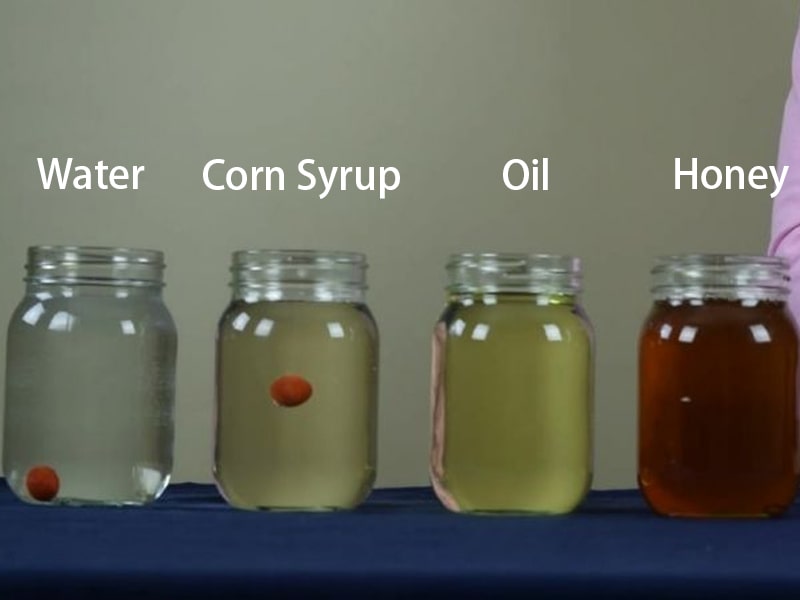

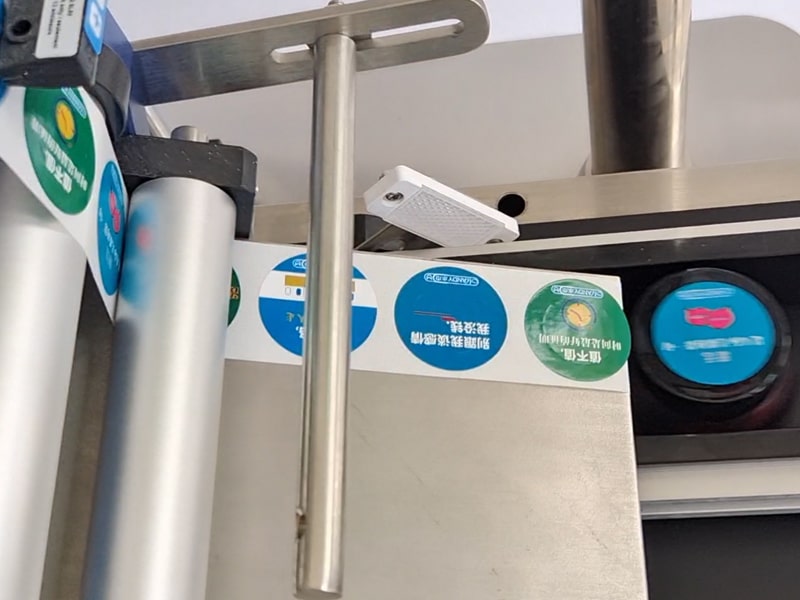

Comments